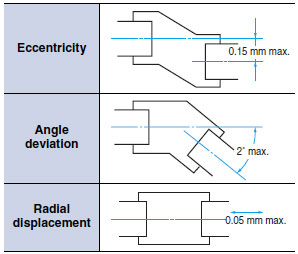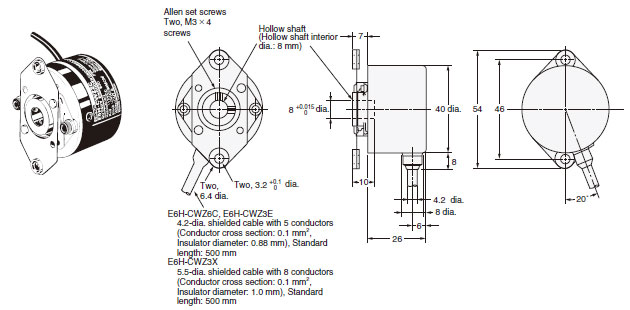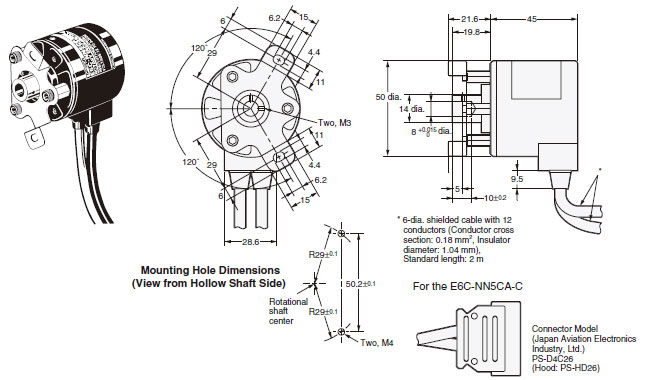What happens if a coupling is not used?
If a coupling is not used, the rotating (i.e., drive) shaft cannot be conveyed to the Rotary Encoder. A coupling can relax the load on the shaft to the Rotary Encoder if there is eccentricity, declination, or deviation in the shaft direction. A coupling is thus required to extend the life of the bearings, i.e., the mechanical life.
As shown in the following figure, E6H and E6C-NN5CA Rotary Encoders have hollow shafts, do not require a coupling (because the coupling is built in), and therefore reduce the installation space.
E6H-C E6C-NN5CA (Pre-wired Model)
E6C-NN5CA (Pre-wired Model)
E6C-NN5CA-C (Connector Model)